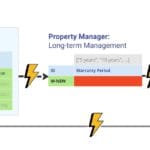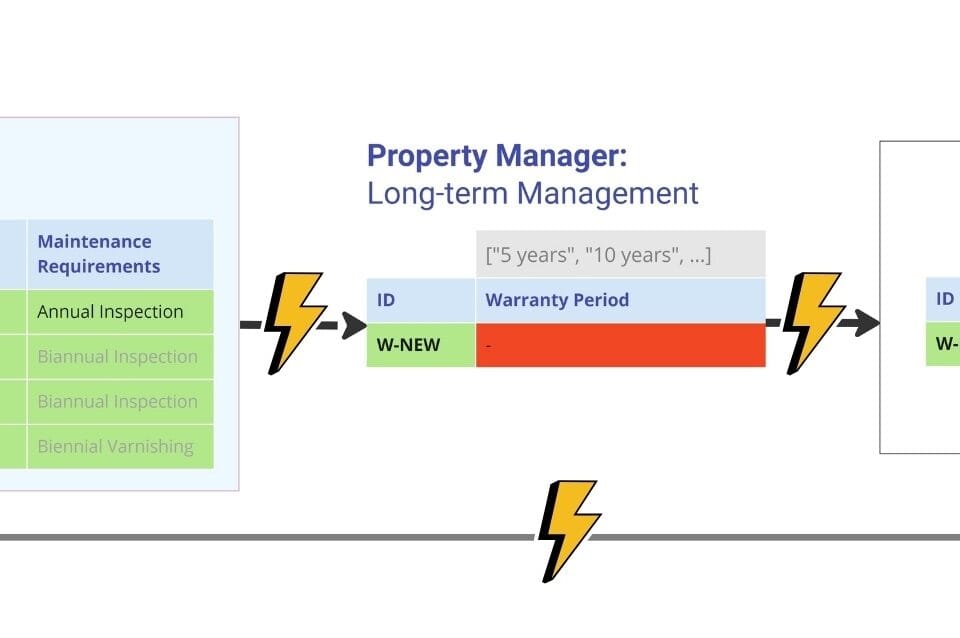Despite the constant development of data quality control methods and tools, the fundamental principle of information compliance remains unchanged. This principle is built into the foundation of a mature management system, whether in business or in everyday life.
The process of iterative data validation is much like the decision-making process that everyone faces on a daily basis. In both cases, we rely on experience, data, and new information. In fact, more and more life and professional decisions – from strategic to mundane – are being made based on data.
For example, when choosing a place to live or a life partner, we intuitively form in our minds a table of criteria and characteristics by which we compare alternatives (Fig. 4.4-19). These characteristics – be it personal qualities of a person or parameters of a real estate object – represent attributes that influence the final decision.
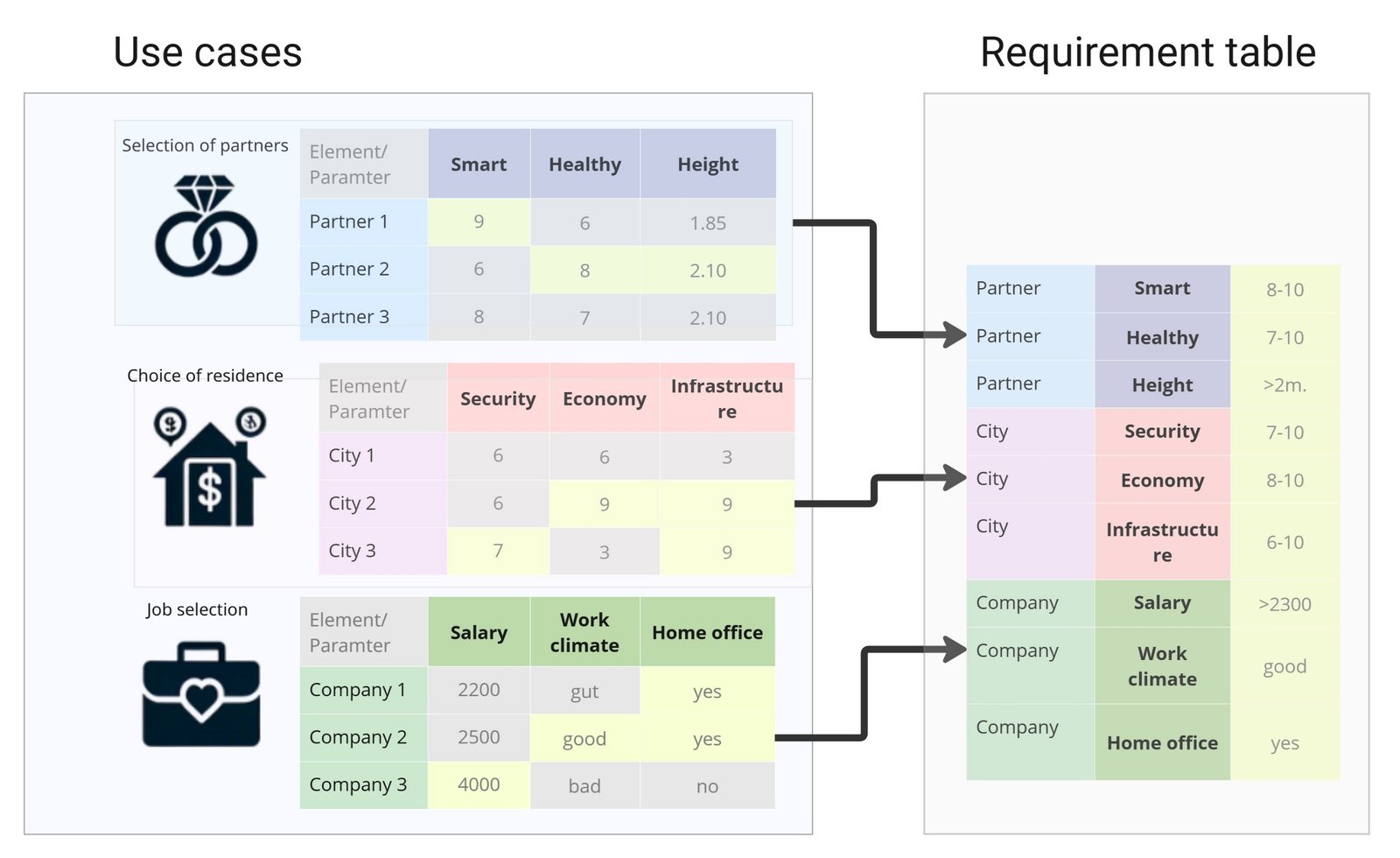
The use of structured data and a formalized approach to describing requirements (Fig. 4.4-20) contributes to more informed and informed choices in both professional and personal life.
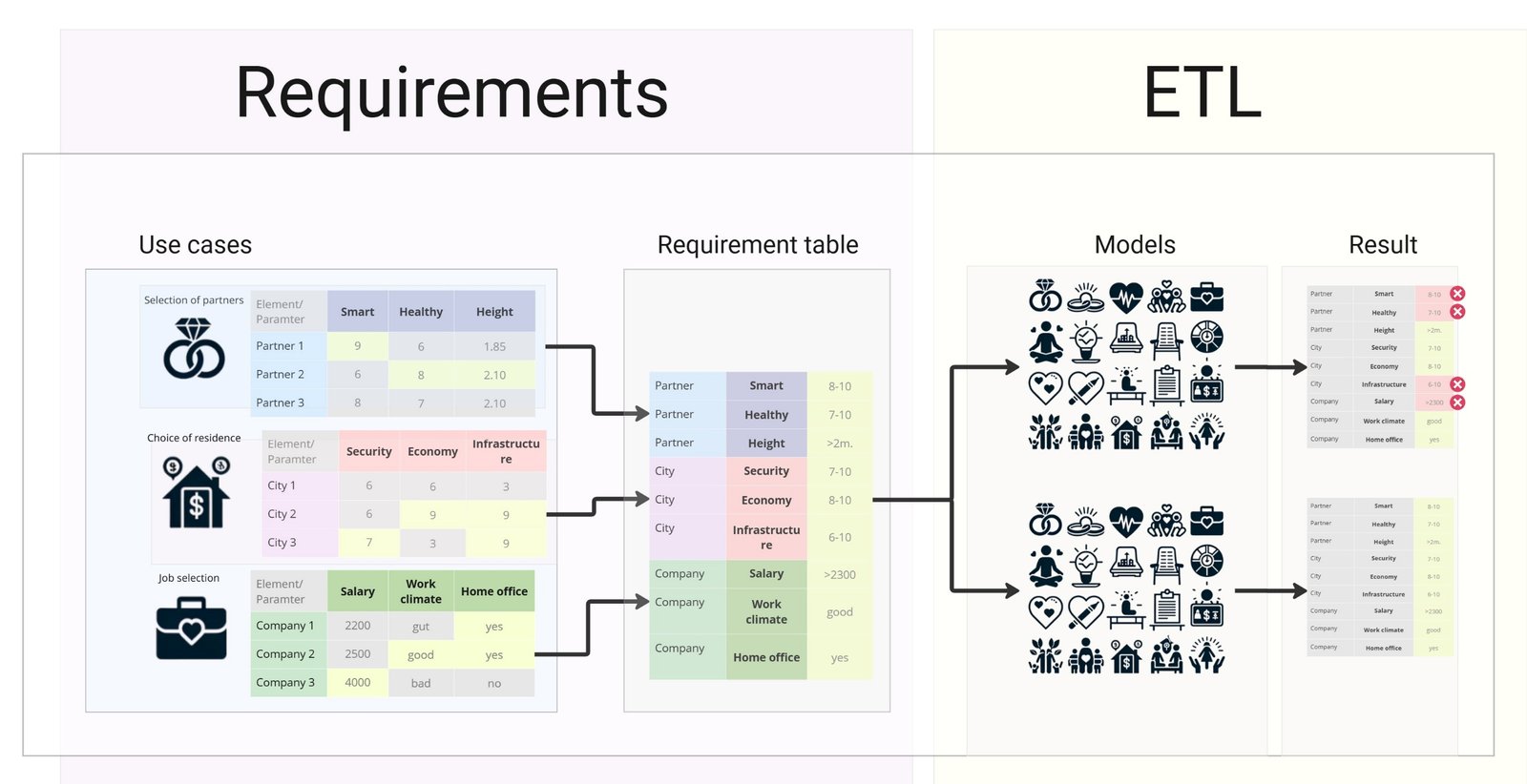
The data-driven decision-making approach is not exclusively a business tool. It is seamlessly integrated into everyday life as well, following common data processing steps (Fig. 4.4-21) similar to the ETL process (Extract, Transform, Load) that we already covered at the beginning of this part when structuring data and that we will cover in detail in the Task Automation Contest in the seventh part of the book:
- Data as the foundation (Extract): In any field – whether it is work or personal life – we collect information. In business, it can be reports, figures, market data; in personal life, it can be personal experience, advice from loved ones, feedback, observations.
- Evaluation criteria (Transform): the information collected is interpreted based on predefined criteria. At work, these are performance indicators (KPIs), budget constraints and norms; in personal life, parameters such as price, convenience, reliability, charisma, etc.
- Prediction and risk analysis (Load): the final stage is decision making based on analyzing the transformed data and comparing possible consequences. This is similar to business processes, where data is passed through a business logic and risk filter.
The decisions we make – from trivial preferences like what to eat for breakfast to major life events like choosing a career or life partner – are inherently the result of processing and evaluating data.
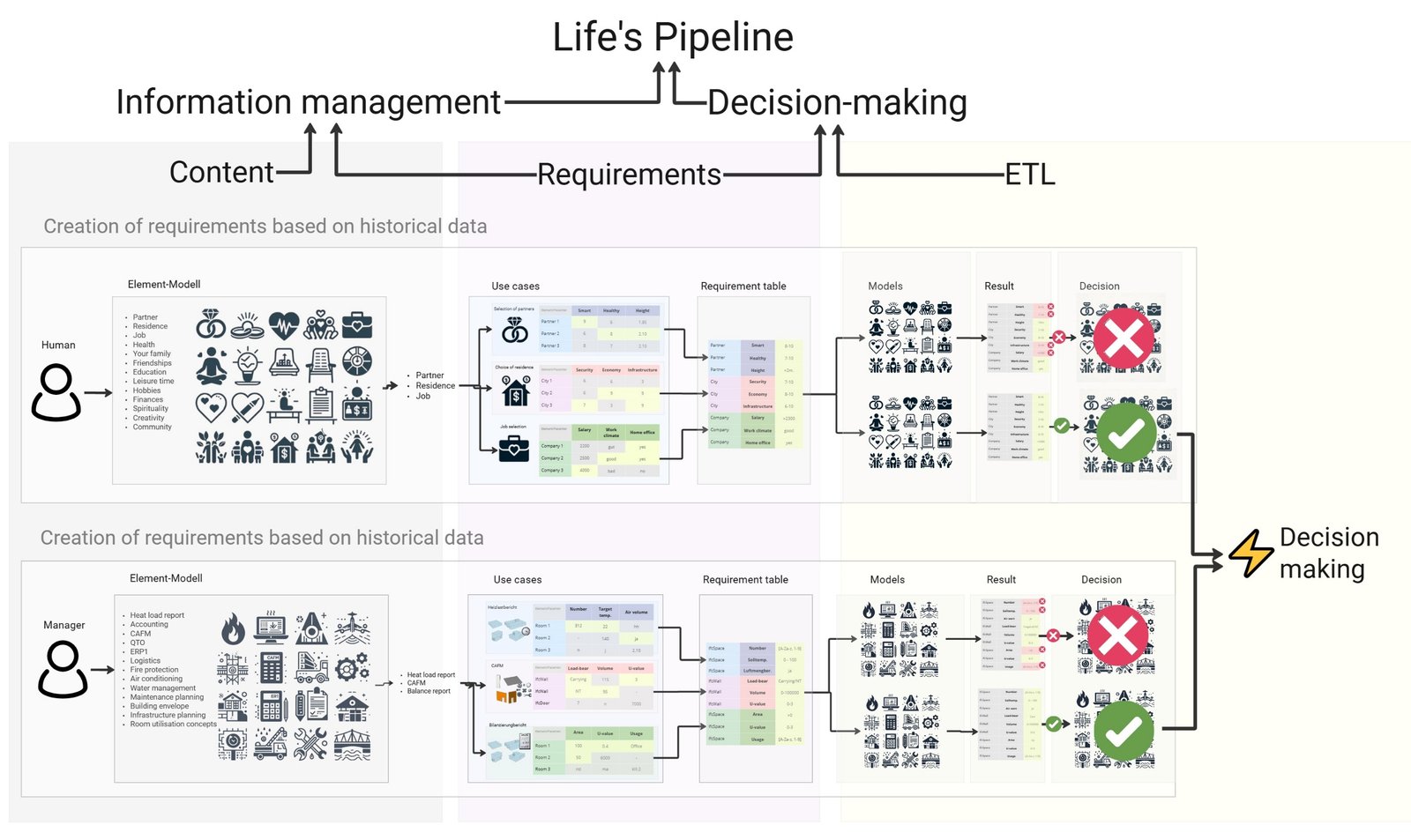
Everything in our lives is interconnected, and just as living organisms, including humans, follow the laws of nature, evolving and adapting to changing conditions, so human processes, including data collection and analysis methods, reflect these natural principles. The close relationship between nature and human activity confirms not only our dependence on nature, but also our desire to apply laws honed by millions of years of evolution to create data architectures, processes and systems for decision making.
New technologies, especially in construction, are a prime example of how humanity is inspired by nature time after time to create better, more sustainable and efficient solutions.

